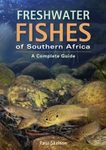About this book
Eat more fish, the doctors say. But is the salmon you are consuming really healthy?
In the early 1970s, a group of scientists researched how to make more food for the growing population of the world. They looked to the sea. They sampled genes from salmon in 41 Norwegian and Swedish rivers and designed a new salmon that was fatter and faster growing. This was considered an amazing innovation and was the beginning of a new industry: salmon farming. The industry spread from coastal Norway to Scotland, Canada, Australia, Ireland, Chile, Iceland, the Faroe Islands, and the United States. Business boomed, jobs were created, and a new type of food, the farmed salmon, spread around the globe. People everywhere bought and enjoyed the abundant fish: grilled, poached, roasted, and as sushi and sashimi. They were grateful for this delicious, affordable protein.
But at what cost?
We now know that there were unintended consequences: some of these new fish escaped, competing for sustenance with other fish in the sea. The new fish spread diseases, salmon louse swarmed, and wild salmon stocks dwindles. In a prizewinning five-year investigation, authors Simen Sætre and Kjetil Østli took an in-depth look at Norway's role in the global salmon industry and, for the first time, produced a comprehensive evaluation of the detrimental effects of salmon farming. From lice to escapees, from concentrating the waste of sea pens in the fjords through which wild salmon swim to their natal streams to the fact that salmon farming causes a net reduction of protein reaped from the ocean, the results don't look good. Recent victories, such as the banning of net-pen fish farms in the waters of Washington State, are an indication that we are awakening to the environmental price of engineered fish.
It is said that we will continue to make the same mistakes unless we understand them. The New Fish combines nature writing from Norwegian fjords, the coast of Canada, Icelandic landscapes and the far south of Chile with character-driven literary non-fiction and classic muckraking. The authors started with this question: What happens when you create a new animal and place it in the sea? This book will tell you the answer.
Contents
Prologue
1. The New Fish Comes into Being
2. The Pioneers Build an Industry
3. The Antagonist of the Story, the Salmon Louse, Finds Its Niche
4. Recounting Summers by the River
5. The New Fish Finds Its Color
6. The New Fish Escapes
7. The New Fish Is Attacked by Lice
8. The New Fish Raises a Warning
9. The New Fish Gets Sick
10. A Salmon Researcher Is Silenced
11. Big Plans for the New Fish
12. Fixing the New Fish
13. A Tangent Leads to a Monster
14. A Sad Story About a Mysterious Substance
15. Might the New Fish Be Healthy After All
16. The Little Shrimp and a Fatal Poisoning
17. A Chief Takes a Stand
18. We Get to the Heart of the Matter
19. A Mystery Disappearance
20. The Story of a Tragic Hero
21. Saving the World with the New Fish (Say the Owners of the New Fish)
22. We Go to a Conference About ... Lice
23. We Are Fascinated by a Wealthy Young Man
24. Encountering a Dreamer
25. A Researcher Asks: How Healthy Is the Fish?
26. The New Fish Makes an Enemy
27. The New Fish Conquers a New Land
28. What Happens When You Write About Salmon
29. We Reflect on What We Have Learned
30. We Seek One Last Secret Paradise
Epilogue
Major Players
Sources
References
Customer Reviews
Biography
Simen Sætre (b. 1974) is an investigative reporter who has been published in many languages. He has written six books, on themes including the international chocolate industry, oil states, and a spy in the Norwegian army. His thought-provoking books have been acclaimed and nominated for prizes.
Kjetil Østli (b. 1975) is a journalist and author. He co-runs the online magazine Harvest, specializing in nature writing. He has received several prizes and awards for his reporting and his four books, and his debut Cops and Robbers earned him the prestigious Brage Award.
Sian Mackie is a translator of Scandinavian literature into English. They were born in Scotland and have an MA in Scandinavian Studies and an MSc in Literary Translation as a Creative Practice from the University of Edinburgh. They have translated a wide range of works, from young adult and children's literature – including Ingunn Thon's A Postcard to Ollis, which was nominated for the 2021 Carnegie Medal-to thrillers and nonfiction. They live in Southampton on the south coast of England.































